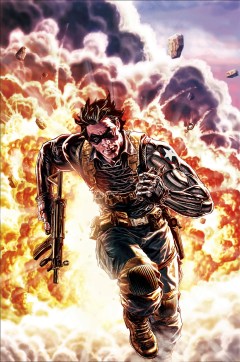
Spider-Man: Fever is quite the adventure. Brendan McCarthy pulls double duty and brings Spider-Man into the world of spider magic. According to McCarthy the book is an homage to Steve Ditko’s Doctor Strange stories from the 60’s, and boy is this book trippy. Spider-Man’s soul is abducted by a spider-demon who brings him to the ancient Webwaze, a dimension that all spiders call home. Doctor Strange goes in after him and it gets weird. Bipedal talking dogs, an aborigine with inter-dimensional walking shoes, a fly that used to be a man. Also, Doctor Strange rides along a river through space in a duck boat. That happens.
Spider-Man is also in this comic book! The King of the spiders wants to eat Spider-Man so he sends him off to the insect realm to prove whether or not he is a spider or a man. McCarthy explores the dual identity of Spider-Man as not just Peter Parker and Spider-Man, but as human and spider. In recent years there have been attempts to move Spider-Man’s origins towards something more to do with magic than science. We meet the spider who bit Peter all those years ago and discover its motives. It sought out Peter before and now it attempts to control him. Peter must decide if he is a man, free to make his own decisions, or a spider, with his destiny seemingly already decided.

 People die. It happens. But why can legacies only be passed along after death? The old hero dies and a new one rises to take their place. It happens all the time, but what’s wrong with doing it a little differently? Why can’t the old hero just move on? Super-heroics is a dangerous business and people will ultimately die, but is it impossible to simply retire, to live? How does killing the hero do anything but hurt the franchise?
People die. It happens. But why can legacies only be passed along after death? The old hero dies and a new one rises to take their place. It happens all the time, but what’s wrong with doing it a little differently? Why can’t the old hero just move on? Super-heroics is a dangerous business and people will ultimately die, but is it impossible to simply retire, to live? How does killing the hero do anything but hurt the franchise? of a superhero and the origin story of another. From the time I discovered the ending of this story in the
of a superhero and the origin story of another. From the time I discovered the ending of this story in the 